Julius Röntgen: Chamber Music, Volume One
The vast output of the German-Dutch composer Julius Röntgen (1855-1932) has begun to emerge from obscurity, with a number of recordings testifying to his astonishing craftsmanship and exquisite sense of melody, balancing skill and spontaneity. The works recorded here confirm his ability to write one gorgeous tune after another.
Atsuko Sahara, violin
John Lenehan, piano
Listen To This Recording:
- Romanze in G minor (1920)
- I Allegro non troppo e cantabile
- II Allegro ben moderato
- III Lento
- IV Finale: Allegro molto
- I Adagio quasi improvisando –
- II Allegro scherzando –
- III Lento –
- IV Allegro energico –
- V Adagio
- I Lento, ma un poco Andante
- II Vivo ed energico
- III Andante con moto
- IV Allegro giocoso
- V Lento, con gran expressione
- I Moderato
- II Allegro con fuoco
- III Moderato
Sonata in E major, Op. 40 (1900)
Phantasie for solo violin (1921)
Aus Jotunheim (1892)
Sonata Trilogica (1925)
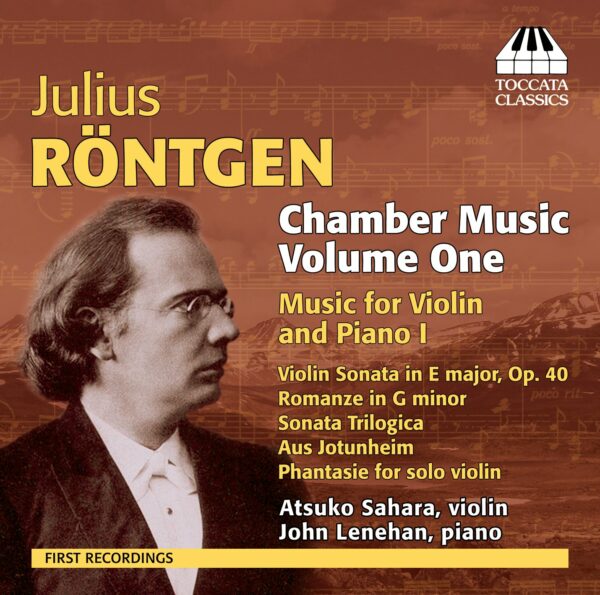
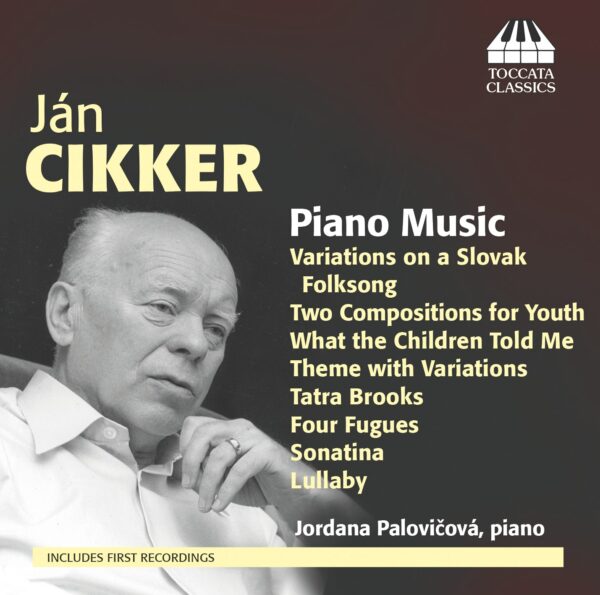
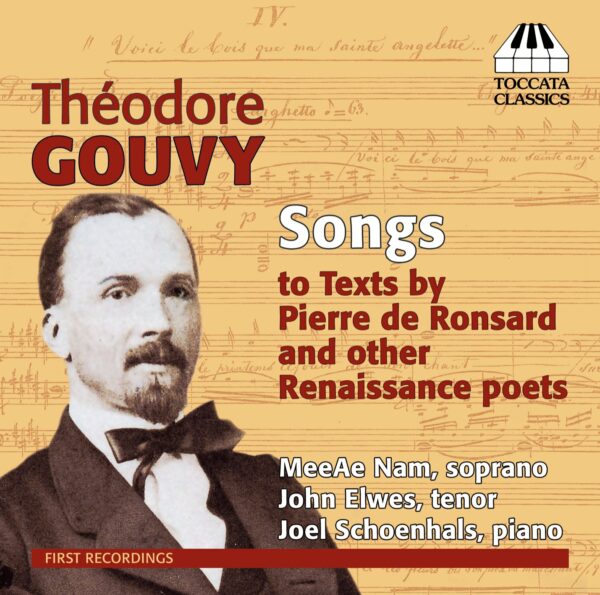
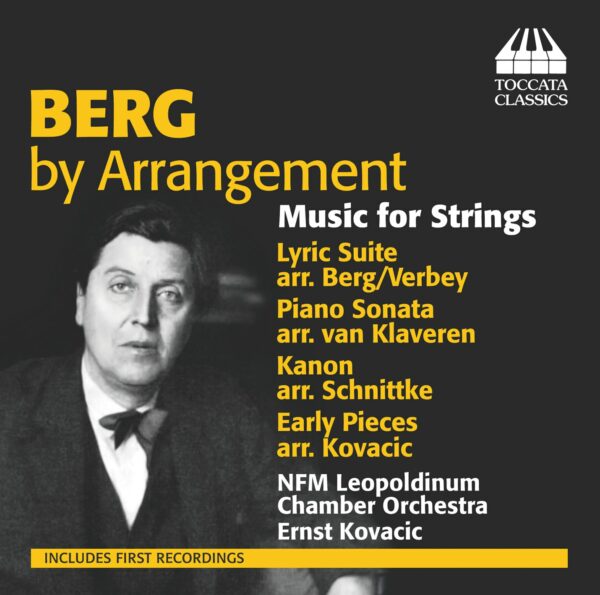
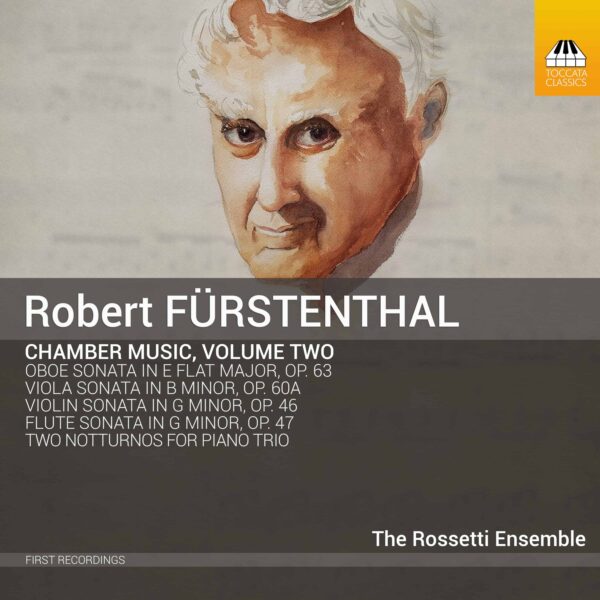
Fanfare Magazin :
‘…there’s more to Röntgen than Brahms, as the Romanze from 1920 attests: Colorful harmonic twists, idiomatic writing for the violin, and an engaging musical personality elevate his music above the level of slavish imitation. …[E-Major Sonata:] Sahara plays folk-like figures authoritatively, and she makes the rich lyrical outpouring of the elegiac Lento grow more strenuously expressive as the movement proceeds. The duo presses the finale urgently. Its principal thematic material may not sound so Brahmsian as does its development; and the movement displays traces of a mysterious Romanticism that cements its individual identity. …[Phantasie for Solo Violin:] The music is not polyphonic, although an occasional figure suggests Bach’s writing for solo violin. The brief Allegro scherzando that follows isn’t polyphonic either, resembling, perhaps more than any other Baroque model, the monophonic fantasies of Georg Philipp Telemann. Sahara imparts to the fourth movement Allegro energico, and the sonata’s epilogue fifth movement, an appealing rhythmic drive and incisive articulation that could make it successful as an encore number. …Sahara and Lenahan unquestionably make as strong a case as they can for the unjustness of this neglect. Their program, in warm and clear recorded sound, therefore deserves attention more widely from explorers of musical byways.’
—Robert Maxham, Fanfare Magazine
MusicWeb International :
‘Röntgen’s star has never shone more brightly on disc than now. …The Romanze in G minor dates from 1920 and this lied shows the quality of his sweetly lyric invention. It prefaces the much earlier Sonata in E major, Op.40 which has its fair quotient of Brahms-and-Elgar about it – the Elgar of the early salon miniatures – but it remains dominated by Brahms’ Op.78 Violin Sonata. Still, for all that, certain individual elements do emerge, most prominently the clod-hopping peasant dance enshrined in the Scherzo. As admirers of his string trios will know he had a real affinity for the gently folkloric and he imbeds it here in his violin works from time to time. The slow movement and finale are both particularly redolent of Brahms but the skill lies in the assimilation. The Phantasie for solo violin dates from 1921 and is interesting for not evoking either of the two expected lodestars – Bach and Reger. Instead it is lighter, indeed at points capricious – not least in the delightful scherzo movement – and makes some demands on the performer especially in the Allegro energico section. …Aus Jotunheim …is a vibrant set, warmly textured, affectionately laid out for the two instruments, and mining the folkloric in the finale where the motifs evoke cow-calls. A hymnal paragraph here is very beautiful – but then so is the whole piece. Finally there is the Sonata Trilogica of 1925, the most free and modern-sounding of the five works. Röntgen sounds quite close to the almost-contemporaneous Delius Second Violin Sonata in the first movement in its fluidity and harmony. Interestingly he goes in for a trio-less scherzo and ends the sonata with a passacaglia but one bedecked with sweet lyricism and ending in lovely calm. …these are most attractive pieces, sensitively played.’
—Jonathan Woolf, MusicWeb International
Alan Howe :
This is a very high quality CD in every way. The Op.40 Sonata is a particular favourite of mine – wonderfully lyrical and beautifully played.
Gramophone :
‘Atsuko Sahara plays it, the G minor Romanze (1920) and the sonatas very prettily, one or two minor issues with intonation aside, superbly accompanied by John Leneham. Most gripping of all, though, is the unaccompanied Phantasie (1921), its five sections flowing with compelling logic and fantasy in equal measure. It’s worth the price of the disc alone.’
—Guy Rickards, Gramophone, October 2014
International Record Review :
‘This latest journey along by byways of the classical repertoire in the company of Toccata Classics is enhanced by an outstanding booklet essay by the late Malcolm MacDonald. A detailed biographical sketch is followed by descriptive notes on each work that add up to an exemplary listening guide. […]
The melodies to be heard in the Romanze of 1920, on the other hand, are original, evidence of Röntgen’s highly developed melodic gift. […] the opening theme is a melody of true distinction, and Röntgen’s treatment of is shows him to be a real composer with something to say. […]
When the work [Phantasie for solo violin] is over one feels one has been listening to a real musical work, and not one that exists only to demonstrate what the composer can do when faced with extreme self-imposed limits. And once again is struck by the composer’s remarkably fertile melodic gift. […]
Whilst all the music on the disc is striking in quality, [Sonata Trilogica] is the work that might arguably be termed a masterpiece. […]
The presence of John Lenehan at the piano is self-recommending. He brings enormous variety of expression to the accompaniments were ten figures would seem to be barely enough to those more intimate and gentle. He is also a most sensitive accompanist. Atsuko Sahara produces a rich, round tone that is particularly suited to this repertoire. […] She is particularly penetrating in the emotionally taxing world of the Sonata Trilogica, whose deeply touching diminuendo close brings to an end this beautifully recorded recital full of new discoveries.’
—William Hedley, International Record Review, January 2015
BBC Music Magazine :
‘Röntgen’s melodic fecundity is heard in the Brahmsian E major Sonata and the Grieg-inspired Aus Jotunheim, whereas darker resonances infuse the later Sonata trilogica.’
—BBC Music Magazine, October 2014